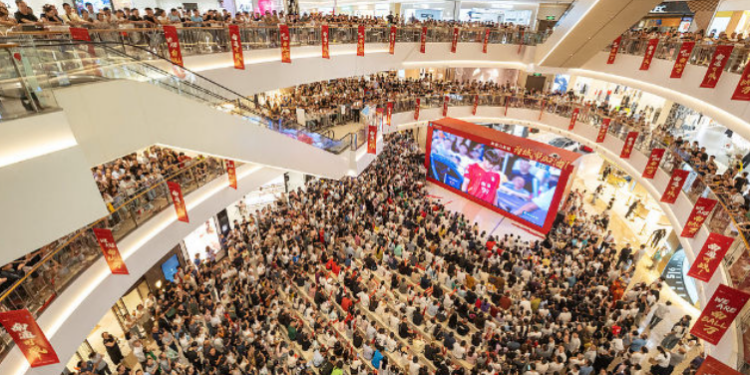The Urban Football League of Jiangsu, popularly known as “Su Chao”, has transcended its sporting roots to become a dynamic force fueling local consumption, domestic tourism, and regional commerce. More than just a celebration of football, Su Chao now represents a robust economic engine. Each match attracts between 30,000 and 50,000 spectators, creating a ripple effect across cities like Nanjing, Nantong, Wuxi, and Taizhou. The influx of fans boosts local business—restaurants, hotels, retail outlets, and transportation services all benefit from the heightened activity.
The most immediate impact is seen in consumer behavior. Victories on the pitch often trigger surges in interest for local products tied to the winning cities. When Nanjing defeated Wuxi, online searches for the city’s iconic “salted duck” rose by 74%. Following Nantong’s win over Taizhou, searches for the “Nantong breakfast” jumped by 367%. These trends highlight a clear link between local pride and increased domestic spending. Tourism figures also reflect Su Chao’s growing influence. According to Qunar, a leading travel booking platform, hotel stays in Jiangsu during the league’s regular season (May to August) increased by 21% compared to the previous year. This surge is driven not only by football fans attending the matches, but also by the surrounding events and entertainment that enrich the overall experience.
Beijing to Host 3rd China International Supply Chain Expo in July 2025
In Taizhou’s Jiangyan district, for instance, a weekend food carnival was launched to coincide with the matches. Since its opening on July 8, the event has attracted over 20,000 visitors per day. Complementary cultural offerings—music festivals and performances featuring Chinese electronic music—have enhanced the visitor experience, extended stays, and increased average spending.
This synergy between sports and local economies has caught the attention of policymakers and industry experts. Municipal governments are now leveraging sporting events as tools for economic revitalization, aligning them with cultural programming, infrastructure improvements, and tourism promotion campaigns.
The approach aligns with national government policies aimed at stimulating domestic consumption as a key driver of economic growth. Earlier this year, a directive was issued to promote cultural and tourism-related spending, encouraging new consumer trends such as immersive experiences, creative crafts, esports, fitness activities, and entertainment fairs. Su Chao fits neatly into this strategy, showing how local initiatives can contribute meaningfully to broader macroeconomic objectives.
At a structural level, government policies—ranging from subsidies for durable goods to incentives for new energy vehicles—are strengthening household purchasing power. But Su Chao demonstrates that economic stimulation doesn’t rely solely on financial tools; it can also be achieved through collective, emotionally engaging experiences that foster community pride and belonging. The success of Su Chao highlights the effectiveness of public policy that integrates sport, local identity, and economic dynamism. It offers a blueprint for how regional competitions can serve not only as entertainment but also as catalysts for development. For Jiangsu, Su Chao is more than just football—it’s a strategic model for territorial economic revitalization.
This experience holds valuable lessons for other regions around the world—particularly in Africa, where abundant athletic talent and rich cultural heritage often lack strategic integration with productive sectors. China’s example shows that when sports are well-managed and embedded in vibrant urban ecosystems, they can become powerful platforms for inclusive and sustainable economic growth.









